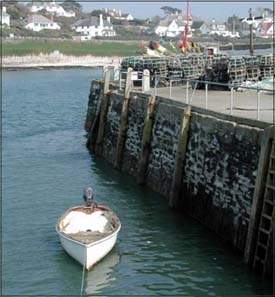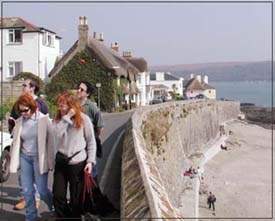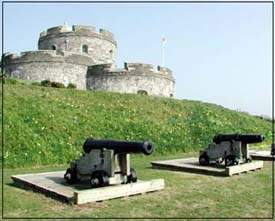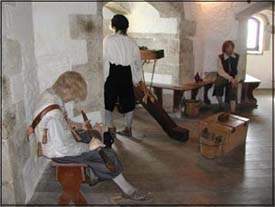

A pretty harbourside village that looks out over the River Fal towards the busy maritime town of Falmouth. The dramatic Cornish coastline around St. Mawes was used as the setting for the popular television series Poldark.
This is very much a sea faring community, with boats and yachts continually setting anchor in the calm waters just beyond the main harbour. St. Mawes' sheltered location creates a a safe anchorage with easy access to the coast, the Fal and the Carricks Roads - (a large waterway created after the Ice age from an ancient valley which flooded as the melt waters caused the sea level to rise dramatically -creating an immense natural harbour, the world's third largest, which is navigable from Falmouth to Truro).
St. Mawes is an ideal spot for a family holiday. The village has two very good beaches,on either side of the harbour, both beaches are excellent for swimming and benefit from a southerly aspect - making them ideal for sunbathing. St. Mawes has several shops, a bank, cafes and hotels around the harbour as well as a Sailing Club. Tennis courts can be hired in the recreation ground nearby.
Ferries leave the main harbour at regular intervals - taking people on the short trip across the Percuil River to Anthony Head or across the Fal to the busy town of Falmouth.
The area also includes part of the coastal footpath and visitors can enjoy many lovely coastal and inland walks.
Built in the reign of Henry VII as a defense against invasion by France. The attack never came, but the Castle, with its three huge circular bastions (like a clover leaf) and gun ports covering every angle of approach, is a fine example of Tudor military architecture. The Castle offers some of the finest views of Falmouth and its situation on the waters edge make it a must to visit. The Castle is now in the custodianship of English Heritage and open to the public all year round.
The impressive St. Mawes Castle, and its larger sister castle, Pendennis, just add to the drama of this evocative landscape. Both Castles were built between 1539 and 1545 by Henry VIII as part of a defensive chain of fortresses to protect the south coast of England. The Castle, with its three huge circular bastions (like a clover leaf) and gun ports covering every angle of approach, is a fine example of Tudor military architecture. The Castle offers some of the finest views of Falmouth and its situation on the waters edge make it a must to visit.
The central tower was designed with four floors. You enter the tower by a bridge to the third level. The elaborate decorations were continued inside the tower, with wooden carvings of a cherub, a monk, Tudor roses and fleur-de-lis surviving to the present day.
The gun platforms at St. Mawes, were like Pendennis, well designed, with the towers upper gun deck being built with ventilation shafts above the gun placements to disperse the smoke. The forward gun room at the castle has several canons on display to the general public; you can still see the sockets in the walls that held the large beams to support the gun tackle needed to manoeuvre the large cannon.
St. Mawes, like its neighbour Pendennis did not see action against the French or the Spanish during the Tudor period. The defenses were improved by Elizabeth I following the Spanish landings and subsequent raid on Penzance and Mounts in 1595; as a precaution against a possible full scale invasion.
St. Mawes and Pendennis, were both Royalist strongholds during the English Civil War. The Royalist commander at St. Mawes, realised that the castle, located part way down the hillside - was impossible to defend from a land attack, so he surrendered the garrison to the Roundheads shortly after being confronted. Pendennis, commanded by Sir John Arundel and assisted by Sir Henry Killigrew, was in a much better strategic position, perched securely on top of the hill and although completely cut off by Parliamentarian forces, resisted the siege for six months.

St. Mawes in Cornwall

A coal Beacon burned here for centuries until , the present lighthouse was built in 1834. It snares the entrance to the Carrick Roads, and seeps ships clear of the infamous Manacles Socks. Although automated the light house is often open for visitors during the summer. The lighthouse was also the set for the television series 'Fraggle Rock'.
The strategic importance of St. Anthony Head for the defense of Carrick Roads and Falmouth is testified by the remains of many fortifications. During WWI the area was used for Army training and in WWII gun batteries were stationed here. The Headland is owned by the National Trust - an interpretative panel is situated by the toilets and a leaflet giving further information is for sale during the summer.
The peninsula shape of the Roseland makes travel by ferry the most convenient and quickest way of visiting from many parts of the County - saving many miles on round trips in the car.
Further details are available from the Tourist Information Centre Boscawen Street, Truro, TR1 2NE · (01872) 274555

St. Mawes Castle
